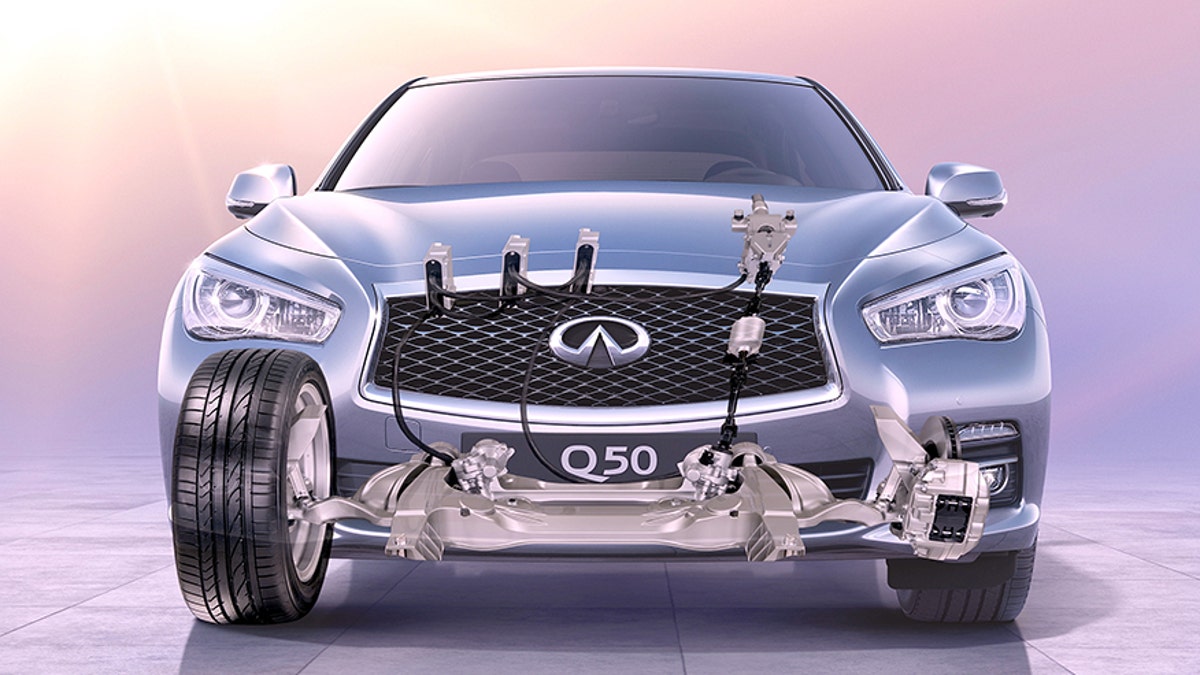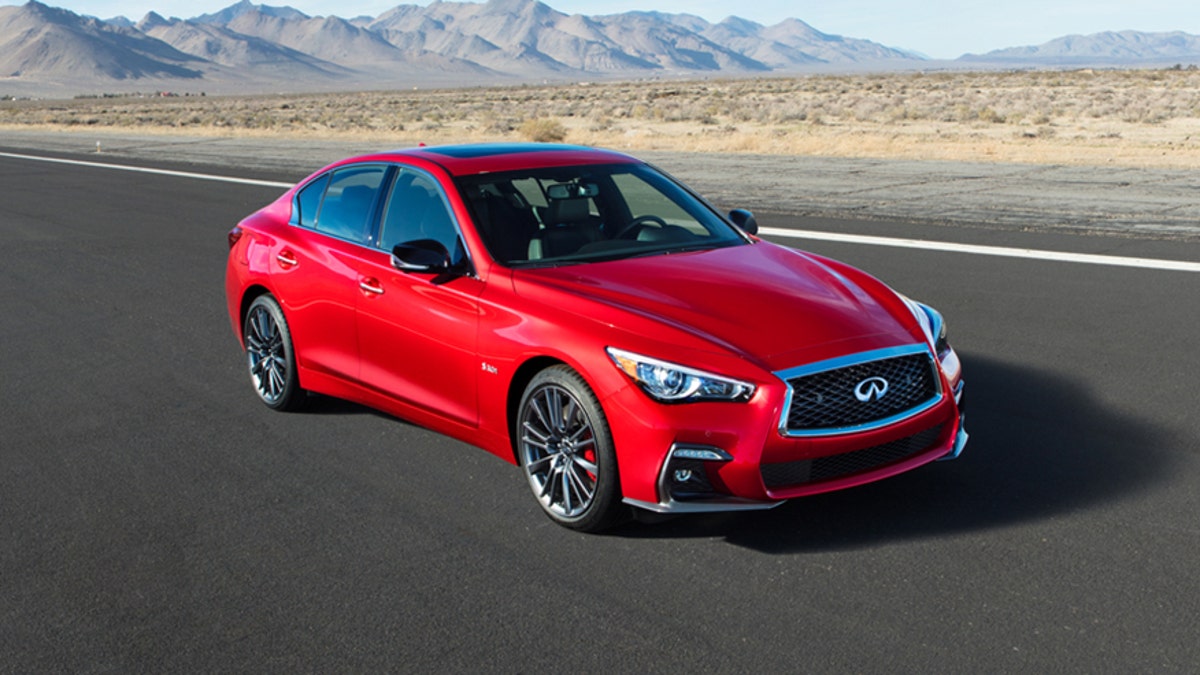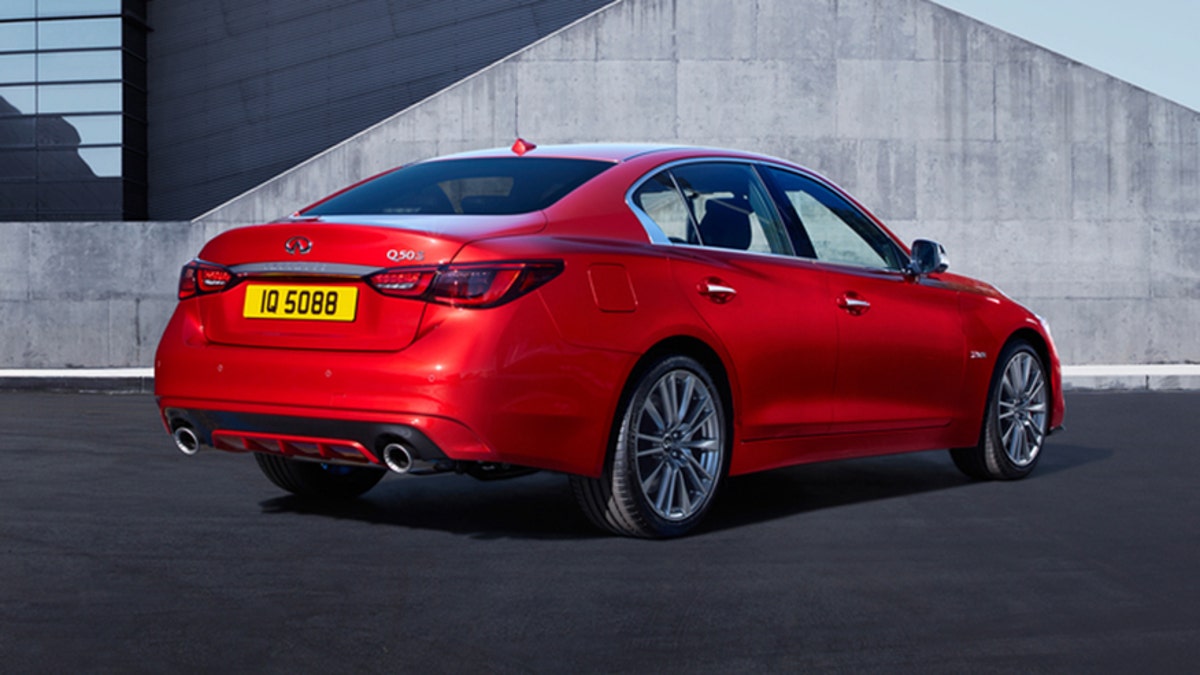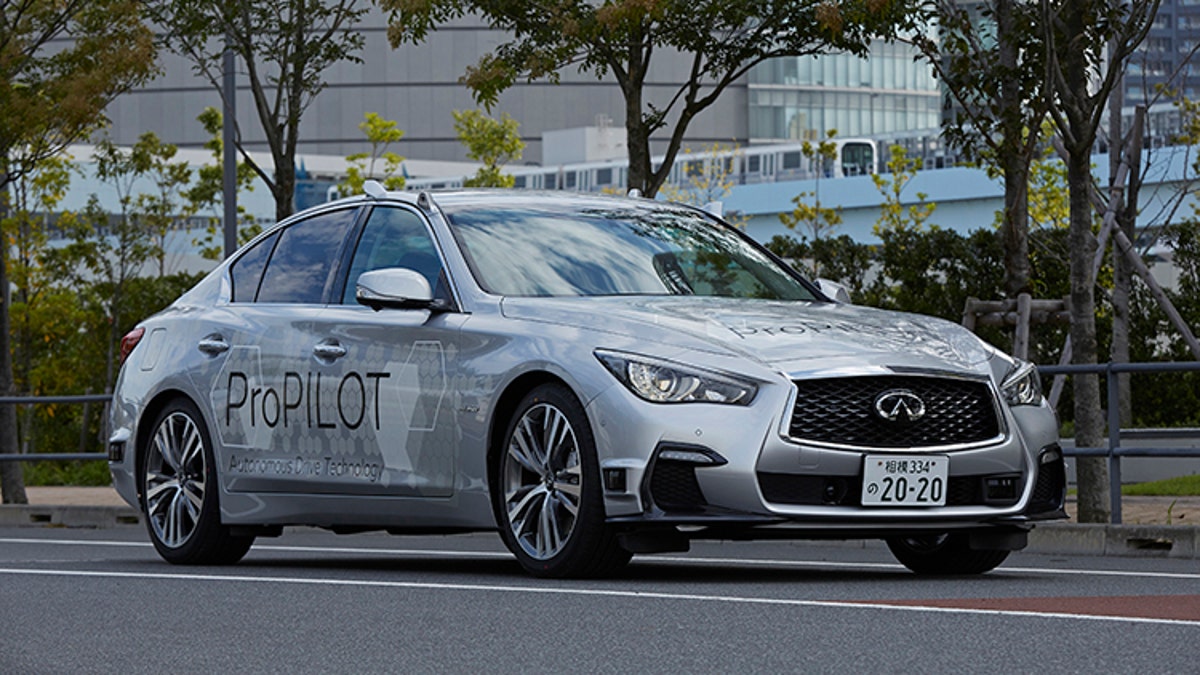
The 2018 INFINITI Q50 sports sedan features a refreshed exterior and interior design, as well as innovative technologies designed to empower and support the driver. While it retains its sleek proportions and athletic stance, the new Q50 establishes greater visual differentiation between model versions, including the performance-inspired Red Sport 400, which is designed in line with its "designed to perform" ethos. (Infiniti)
Add steering wheels to the endangered list.
Fully autonomous cars won’t need them when they arrive (which we’ve been told will be in five years, every year for the past five years). An electric motor attached to the steering rack can turn the wheels just fine on its own when directed by a computer.
Your kid’s remote-control car can demonstrate this.
Or your new sports sedan.

In 2013, Infiniti became the first automaker to introduce a âsteer-by-wireâ system in a production car. The 2014 Infiniti Q50 offers Infinitiâs Direct Adaptive Steering⢠which, transmits steering inputs electronically instead of mechanically, providing quicker and more precise response, as well as unsurpassed levels of customization. Direct Adaptive Steering lets the driver personalize steering modes, effort and response, while reducing the transmission of negative feedback from rough roads through the steering column. (Infiniti)
Infiniti launched its steer-by-wire Direct Adaptive Steering system a few years ago in its Q50, which comes with what looks like a steering wheel, but actually is a unique drive-by-wire unit that’s not much different from the one you use to play racing games at home. It sends instructions to the electric motor-equipped steering assembly without using a mechanical connection. That means the car kind of steers itself, and actually does when you use its lane-keeping assist function, which watches the lines on the road and tries to stay between them, allowing you to let go of the wheel for brief moments.
It can also filter the information it sends back to your hands and fine-tune the way it feels, by changing its resistance and how far you need to turn it, depending on the situation and driving mode it is in.
But there have been some growing pains. It worked well when it came out in 2014, but was a slightly odd experience, as artificial as it sounded. Then there was the inevitable recall last year because a software issue could "lead to a lack of steering responsiveness and change in turning radius" just after the car was started. No accidents linked to the problem were reported.
The system has been updated for 2017 in Version 2.0-style, however. Not just to clean up any lingering code glitches, but also to provide a more natural feel.

The 2018 INFINITI Q50 sports sedan features a refreshed exterior and interior design, as well as innovative technologies designed to empower and support the driver. While it retains its sleek proportions and athletic stance, the new Q50 establishes greater visual differentiation between model versions, including the performance-inspired Red Sport 400, which is designed in line with its "designed to perform" ethos. (Infiniti)
It’s included as part of an optional driver assist package offered on Q50 sedans and Q60 coupes with V6 engines. I tried it out in a top-of-the-line Q50 Red Sport 400 with all-wheel-drive and a 400 hp twin-turbocharged engine — the sportiest version of the sportiest sedan Infiniti makes, and probably not the best car to showcase this particular tech.

(Infiniti)
The Q50 is an older model, with mechanical ties to the 370Z sports car. It’s a luxury car, but it’s also a driver’s machine, especially in Red Sport form. Maybe that was the challenge. If it can make it here…
As soon as you pull out of a parking space, you notice something’s up. At least, I did with the system in mind. It’s better than the original, but there’s still a dead spot as you turn the steering wheel off center before the car starts turning and the resistance kicks in. The delay is miniscule and much shorter than before, but it’s there.
Beyond that, everything works fine, but the system intentionally removes a lot of the little vibrations you’d normally feel through the wheel. This is meant to reduce fatigue, but it disconnects you further from the surface of the road.
It doesn’t take long to get used to it, though, and the way it adjusts the steering ratio to make it easier to drive at different speeds is seamless and effective. Unless you’re a race car driver, or think you are, it probably is better than an old-fashioned steering column. By the way, it still has one of those. It engages as a backup in case the computer fails. Infiniti apparently isn’t ready to trust the robots just yet.
I do think it would be better suited to a less dynamic car, like one of Infiniti’s SUVs that you’d be happy to let someone else drive. Then again, a lot of enthusiasts these days spend as much time on racing simulators as they do in racing cars, so it might be on point.

(Infiniti)
Infiniti is all-in on Direct Adaptive Steering, though, and even has a prototype for an almost fully-autonomous Q50 fitted with it that offers "human-like driving feel that gives passengers peace of mind."
Infiniti expects to have a production car featuring the tech on sale by 2020, we'll have to wait to see if it has four or five wheels.
NISSAN PROPILOT ASSIST SEMI-AUTONOMOUSDRIVING SYSTEM TO LAUNCH IN 2018 ROGUE



















